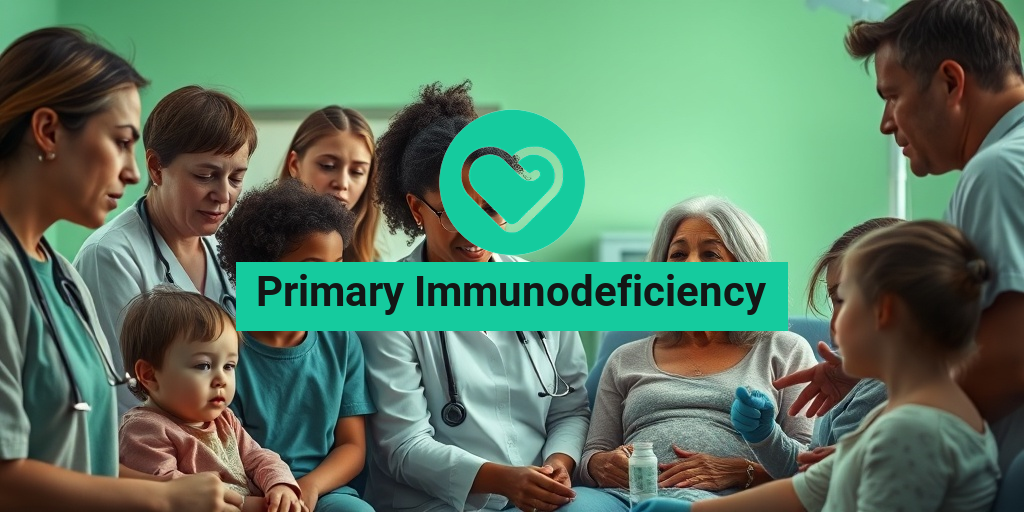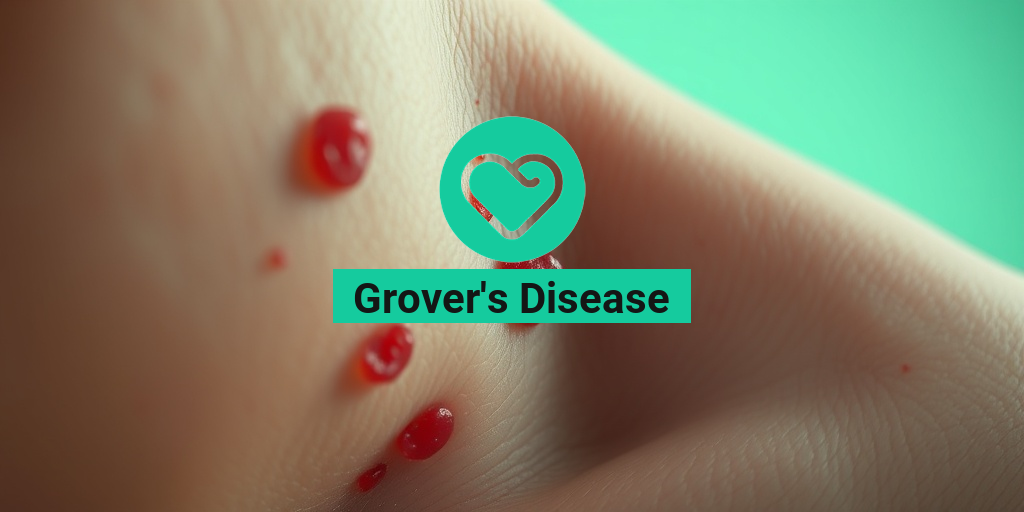What Is Primary Immunodeficiency?
Primary immunodeficiency (PI) refers to a group of disorders caused by intrinsic defects in the immune system. These conditions are typically present at birth and can lead to an increased susceptibility to infections, autoimmune diseases, and certain cancers. Unlike secondary immunodeficiencies, which are acquired due to external factors such as infections or medications, primary immunodeficiencies are genetic and can be inherited from one or both parents.
Understanding the Immune System
The immune system is a complex network of cells, tissues, and organs that work together to defend the body against harmful invaders like bacteria, viruses, and parasites. In individuals with primary immunodeficiency, one or more components of this system are missing or not functioning properly. This can result in a range of health issues, making it crucial to understand the underlying mechanisms of these disorders.
Types of Primary Immunodeficiency
There are over 400 different types of primary immunodeficiency diseases, each with its own unique characteristics. Some of the most common include:
- Common Variable Immunodeficiency (CVID): A disorder characterized by low levels of antibodies, leading to recurrent infections.
- X-Linked Agammaglobulinemia (XLA): A genetic condition that results in a lack of B cells, which are essential for producing antibodies.
- Severe Combined Immunodeficiency (SCID): Often referred to as “bubble boy disease,” SCID is a life-threatening condition where both T and B lymphocytes are absent or dysfunctional.
- Hyper-IgM Syndrome: A disorder where the body produces high levels of immunoglobulin M (IgM) but low levels of other antibody types, leading to increased infection risk.
Understanding these types can help in recognizing symptoms and seeking appropriate treatment.
Primary Immunodeficiency Symptoms
Identifying the symptoms of primary immunodeficiency is crucial for early diagnosis and treatment. Symptoms can vary widely depending on the specific type of immunodeficiency but generally include:
Frequent Infections
One of the hallmark signs of primary immunodeficiency is the occurrence of frequent and severe infections. These can include:
- Recurrent respiratory infections (e.g., pneumonia, bronchitis)
- Chronic sinus infections
- Frequent gastrointestinal infections
- Skin infections
Individuals may find themselves battling infections that are more severe or last longer than those experienced by healthy individuals.
Autoimmune Disorders
People with primary immunodeficiency may also develop autoimmune disorders, where the immune system mistakenly attacks the body’s own tissues. Symptoms can include:
- Joint pain and swelling
- Skin rashes
- Fatigue
These symptoms can complicate the diagnosis, as they may mimic other conditions.
Failure to Thrive
In children, primary immunodeficiency can lead to growth delays or failure to thrive. This can manifest as:
- Delayed milestones
- Low weight for age
- Frequent hospitalizations due to infections
Parents should be vigilant about their child’s growth and development, especially if there is a family history of immunodeficiency disorders.
Other Symptoms
Additional symptoms may include:
- Chronic fatigue
- Swollen lymph nodes
- Gastrointestinal issues, such as diarrhea
If you or a loved one is experiencing these symptoms, it’s essential to consult a healthcare professional for a thorough evaluation. A primary immunodeficiency panel can help diagnose the condition and guide treatment options.
For more information and resources on primary immunodeficiency, consider visiting Yesil Health AI, where you can find evidence-based health answers tailored to your needs.
Understanding primary immunodeficiency is the first step toward managing it effectively. With the right support and treatment, individuals can lead fulfilling lives despite their condition. 🌟

Causes of Primary Immunodeficiency
Primary immunodeficiency (PI) refers to a group of disorders caused by intrinsic defects in the immune system. These defects can lead to increased susceptibility to infections and other health complications. Understanding the causes of primary immunodeficiency is crucial for early diagnosis and effective management. Let’s explore the primary causes of this condition.
Genetic Mutations
The most common cause of primary immunodeficiency is genetic mutations. These mutations can affect various components of the immune system, including:
- B cells: Responsible for producing antibodies.
- T cells: Play a critical role in cell-mediated immunity.
- Complement system: A group of proteins that enhance the ability of antibodies to clear pathogens.
Some well-known genetic disorders associated with primary immunodeficiency include:
- Severe Combined Immunodeficiency (SCID): Often referred to as “bubble boy disease,” SCID is caused by mutations that affect both T and B lymphocytes.
- Common Variable Immunodeficiency (CVID): This condition is characterized by low levels of antibodies and increased susceptibility to infections.
- X-Linked Agammaglobulinemia (XLA): A genetic disorder that leads to a lack of B cells and, consequently, a deficiency in antibody production.
Environmental Factors
While primary immunodeficiencies are primarily genetic, certain environmental factors can exacerbate the condition or trigger symptoms. These include:
- Infections: Certain viral infections can temporarily impair immune function, particularly in individuals with underlying genetic defects.
- Malnutrition: A lack of essential nutrients can weaken the immune system, making individuals more susceptible to infections.
- Exposure to toxins: Environmental toxins can also impact immune function, although this is more commonly associated with secondary immunodeficiencies.
Autoimmune Disorders
In some cases, primary immunodeficiency can be linked to autoimmune disorders, where the immune system mistakenly attacks healthy cells. This can lead to a paradoxical situation where the body is both immunocompromised and overactive. Examples include:
- Systemic Lupus Erythematosus (SLE): An autoimmune disease that can affect various organs and lead to immune dysfunction.
- Rheumatoid Arthritis: This condition can also impact immune function and may coexist with primary immunodeficiency.
Risk Factors for Primary Immunodeficiency
Identifying risk factors for primary immunodeficiency can aid in early detection and intervention. While some individuals may be genetically predisposed, several other factors can increase the likelihood of developing these disorders.
Family History
A significant risk factor for primary immunodeficiency is a family history of immune disorders. If a close relative has been diagnosed with a primary immunodeficiency disease, the risk of developing a similar condition increases. Genetic counseling may be beneficial for families with a history of these disorders.
Age and Gender
Age and gender can also play a role in the risk of developing primary immunodeficiency. Some conditions are more prevalent in children, while others may manifest later in life. Additionally, certain disorders, such as X-Linked Agammaglobulinemia, predominantly affect males due to their inheritance pattern.
Ethnicity
Research indicates that certain ethnic groups may be more susceptible to specific primary immunodeficiency disorders. For example, some genetic mutations associated with primary immunodeficiency are more common in individuals of specific ethnic backgrounds. Awareness of these patterns can help in early diagnosis and treatment.
Chronic Health Conditions
Individuals with chronic health conditions, such as diabetes or liver disease, may have an increased risk of developing primary immunodeficiency. These conditions can compromise the immune system, making it more challenging for the body to fight off infections.
Environmental Exposures
Exposure to certain environmental factors, such as pollutants or chemicals, may also contribute to the risk of developing primary immunodeficiency. While these factors are more commonly associated with secondary immunodeficiencies, they can still play a role in individuals with underlying genetic predispositions.
In summary, understanding the causes and risk factors for primary immunodeficiency is essential for effective management and treatment. By recognizing these elements, individuals and healthcare providers can work together to ensure better health outcomes. 🌟

Diagnosis of Primary Immunodeficiency
Diagnosing Primary Immunodeficiency (PI) can be a complex process, as the symptoms often mimic those of other conditions. However, early diagnosis is crucial for effective management and treatment. Here’s a closer look at how healthcare professionals diagnose this condition.
Understanding Symptoms
The first step in diagnosing primary immunodeficiency is recognizing the symptoms. Individuals with PI may experience:
- Frequent infections that are difficult to treat
- Infections that recur after treatment
- Unusual infections caused by organisms that typically do not cause illness in healthy individuals
- Delayed growth or development in children
- Autoimmune disorders
If you or someone you know is experiencing these symptoms, it’s essential to consult a healthcare provider for further evaluation.
Medical History and Physical Examination
During the initial consultation, the healthcare provider will take a detailed medical history, including:
- Frequency and type of infections
- Family history of immunodeficiency disorders
- Any previous treatments and their outcomes
A thorough physical examination will also be conducted to check for signs of infections or other related health issues.
Laboratory Tests
To confirm a diagnosis of primary immunodeficiency, several laboratory tests may be performed, including:
- Immunoglobulin Levels: Measuring the levels of immunoglobulins (antibodies) in the blood can help determine if the body is producing enough antibodies to fight infections.
- Complete Blood Count (CBC): This test assesses the overall health of the immune system by evaluating the different types of blood cells.
- Specific Antibody Response Tests: These tests evaluate how well the immune system responds to vaccines.
- Genetic Testing: In some cases, genetic testing may be necessary to identify specific genetic mutations associated with primary immunodeficiency disorders.
These tests help healthcare providers determine the specific type of primary immunodeficiency and tailor treatment accordingly.
Primary Immunodeficiency Treatments
Once diagnosed, managing Primary Immunodeficiency involves a combination of treatments aimed at improving the immune system’s function and preventing infections. Here are some common treatment options:
Immunoglobulin Replacement Therapy
One of the most effective treatments for many types of primary immunodeficiency is immunoglobulin replacement therapy. This therapy involves administering immunoglobulin (antibodies) through intravenous (IV) or subcutaneous (under the skin) routes. It helps boost the immune system and reduce the frequency and severity of infections.
Antibiotic Prophylaxis
For individuals prone to recurrent infections, healthcare providers may prescribe prophylactic antibiotics. These medications help prevent infections before they occur, particularly in high-risk patients.
Gene Therapy
In recent years, gene therapy has emerged as a promising treatment for certain types of primary immunodeficiency. This innovative approach aims to correct the underlying genetic defects responsible for the disorder, potentially offering a long-term solution.
Stem Cell Transplantation
For severe cases of primary immunodeficiency, stem cell transplantation may be considered. This procedure involves replacing the defective immune system with healthy stem cells from a donor, which can help restore normal immune function.
Supportive Care
In addition to specific treatments, supportive care is essential for managing primary immunodeficiency. This may include:
- Regular monitoring and follow-up with healthcare providers
- Vaccinations to protect against preventable diseases
- Healthy lifestyle choices, including a balanced diet and regular exercise
By combining these treatment strategies, individuals with primary immunodeficiency can lead healthier lives and reduce the risk of infections. 🌟

Living with Primary Immunodeficiency
Living with Primary Immunodeficiency (PI) can be a challenging journey, but understanding the condition and its management can significantly improve the quality of life for those affected. Primary immunodeficiencies are a group of disorders caused by intrinsic defects in the immune system, leading to increased susceptibility to infections and other health issues. In this section, we will explore the daily realities of living with PI, including symptoms, management strategies, and support systems.
Understanding the Symptoms
Individuals with primary immunodeficiency may experience a variety of symptoms, which can vary widely depending on the specific type of disorder. Common symptoms include:
- Frequent infections: Recurrent respiratory infections, skin infections, and gastrointestinal infections are common.
- Delayed recovery: Infections may take longer to resolve, requiring extended treatment.
- Autoimmune issues: Some individuals may develop autoimmune disorders, where the immune system mistakenly attacks the body’s own tissues.
- Growth and development issues: Children with PI may experience delays in growth and development.
Management Strategies
Managing primary immunodeficiency involves a combination of medical treatment, lifestyle adjustments, and ongoing monitoring. Here are some effective strategies:
- Regular medical care: Routine check-ups with an immunologist are crucial for monitoring health and adjusting treatment plans.
- Immunoglobulin therapy: Many individuals benefit from immunoglobulin replacement therapy, which helps boost the immune system.
- Vaccinations: Staying up-to-date with vaccinations is essential, although some live vaccines may not be recommended.
- Healthy lifestyle: A balanced diet, regular exercise, and adequate sleep can help strengthen overall health.
Building a Support System
Living with a chronic condition like primary immunodeficiency can be isolating. Building a strong support system is vital for emotional well-being. Here are some ways to connect with others:
- Support groups: Joining local or online support groups can provide a sense of community and shared experiences.
- Education: Educating family and friends about PI can foster understanding and support.
- Professional counseling: Speaking with a mental health professional can help manage the emotional challenges associated with chronic illness.
Future Research and Developments
The field of primary immunodeficiency is rapidly evolving, with ongoing research aimed at improving diagnosis, treatment, and overall understanding of these disorders. Here are some exciting developments on the horizon:
Advancements in Genetic Research
Genetic testing has become a cornerstone in diagnosing primary immunodeficiencies. Researchers are continually identifying new genetic mutations associated with PI, which can lead to more accurate diagnoses and targeted therapies. This advancement not only helps in understanding the condition better but also opens doors for potential gene therapies in the future.
Innovative Treatment Options
Current treatments for primary immunodeficiency primarily focus on managing symptoms and preventing infections. However, researchers are exploring innovative therapies, including:
- Gene therapy: This approach aims to correct the underlying genetic defects causing PI, potentially offering a long-term solution.
- Monoclonal antibodies: These targeted therapies are being developed to enhance the immune response in individuals with specific types of PI.
- Personalized medicine: Tailoring treatment plans based on individual genetic profiles and responses to therapy is becoming increasingly feasible.
Improved Awareness and Education
As awareness of primary immunodeficiency grows, so does the emphasis on education for healthcare providers and the public. Increased understanding of PI can lead to earlier diagnosis and better management of the condition. Initiatives aimed at educating both patients and healthcare professionals are crucial for improving outcomes.
In conclusion, while living with primary immunodeficiency presents unique challenges, advancements in research and treatment are paving the way for a brighter future. With ongoing support and education, individuals with PI can lead fulfilling lives and manage their condition effectively. 🌟

Frequently Asked Questions about Primary Immunodeficiency
What is Primary Immunodeficiency?
Primary Immunodeficiency refers to a group of disorders caused by intrinsic defects in the immune system. These conditions result in an increased susceptibility to infections and can lead to various health complications.
What are the common types of Primary Immunodeficiency diseases?
- Severe Combined Immunodeficiency (SCID)
- Common Variable Immunodeficiency (CVID)
- IgA Deficiency
- X-Linked Agammaglobulinemia (XLA)
- Chronic Granulomatous Disease (CGD)
How are Primary Immunodeficiency disorders diagnosed?
Diagnosis typically involves a combination of clinical evaluation, family history, and specific laboratory tests, including a primary immunodeficiency panel that assesses various immune functions and antibody levels.
What are the treatment options for Primary Immunodeficiency?
Treatment varies depending on the specific disorder but may include:
- Immunoglobulin replacement therapy
- Antibiotic prophylaxis
- Stem cell transplantation
- Gene therapy (for certain conditions)
Can Primary Immunodeficiency be cured?
While some primary immunodeficiency disorders can be managed effectively, others may require ongoing treatment. In certain cases, such as with stem cell transplantation, a cure may be possible.
How does Primary Immunodeficiency differ from Secondary Immunodeficiency?
Primary Immunodeficiency is caused by genetic defects, while secondary immunodeficiency results from external factors such as infections, medications, or malnutrition. Understanding this distinction is crucial for appropriate management.
Where can I find more information about Primary Immunodeficiency?
For more detailed information, consider visiting reputable health websites, consulting with healthcare professionals, or joining support groups focused on primary immunodeficiency diseases.
Are there any support groups for individuals with Primary Immunodeficiency?
Yes! Many organizations provide support and resources for individuals and families affected by primary immunodeficiency disorders. These groups can offer valuable information, emotional support, and community connections. 🌟




